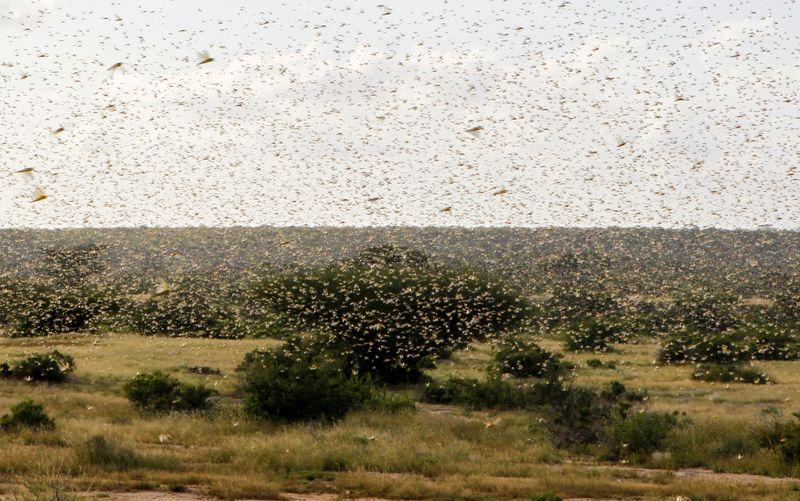
After the past month’s desert locust infestation exposed up to 37 per cent of the Pakistan’s area to food insecurity and famine, it appears the government’s emergency pest control measures have turned out to be a double-edged-sword. It is feared that pesticides used to ward off locusts in various parts of the country, including South Punjab, have also been harming the region’s wildlife.
World Wide Fund for Nature (WWF) and Wildlife Officials are concerned that the use of chemical fertilisers in crops and the spraying of pesticides in infected areas is affecting the local bird population.
It has been observed that birds including winged starlings and mynas as well as farmer-friendly insects like the dragonfly are becoming increasingly rare in regions where the chemicals are being used.
According to a report published by The International Union for Conservation of Nature (IUCN), the number of crop-eating birds has dropped by a dramatic 60 per cent in these areas.
As per Cholistan Institute of Desert Studies Assistant Professor Dr Mohammad Abdullah, there are over 10,000 different species of birds on earth. “These birds play an important role in aiding human existence. They clean the environment, eat over 28 million insects a year and also naturally disperse seeds.”
Dr Abdullah further stated, these chemical sprays can also prove harmful for humans as well as animals that may feed on the poisoned insects or the sprayed crops. In Pakistan, a large number of local and migratory birds eat crop pests, including the Maynas, Black Drongos, House Crows, Kettle Egrets, Common Babblers, House Sparrows, Green Bee Eaters, Rosie Starlings and Indian Rollers. All of these birds at risk of the harmful substances being used to ward of the locust swarms.
A report issued by the Food and Agriculture Organization (FAO), highlights that over 2.5 million tonnes of chemical toxins are annually sprayed on crops worldwide. While locally, regions like cotton cultivation areas are sprayed the most--up to 80 per cent--which increases the risk manifold in Pakistan.
Following the disastrous impact of locust infestation, experts believe that there is a possibility that the pest might attack again the monsoon months. However, in the case of a second wave, all available evidence encourages the use of biological pesticides instead of harmful chemicals in order to protect other species.
According to WWF Pakistan Director Hammad Naqi, although there has not been any official or unofficial survey conducted to gauge the impact of these anti-locust pesticides on other species. “However, there is sufficient evidence from the past to believe that the use of chemical fertilisers and poisons in crops can lead to the extinction of farmer-friendly birds. Thus, we must take safe measures to eradicate locusts so that farmers and eco-friendly birds are not harmed,” he stated.
On the other hand, speaking to The Express Tribune on the matter, Punjab Wildlife Honorary Game Warden Badar Munir pointed out that the use of poisons on crops has affected the winged starling the most.
“Winged starling is a bird that eats almost all the pests that damage crops, including locusts. A single bird can more than 100 locusts in a day.
Therefore, there is a huge possibility that the sprayed crops may not only the locusts but the various birds on the infected locusts,” he asserted.
Published in The Express Tribune, July 28th, 2020.

















COMMENTS
Comments are moderated and generally will be posted if they are on-topic and not abusive.
For more information, please see our Comments FAQ